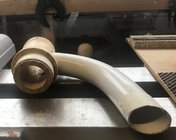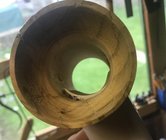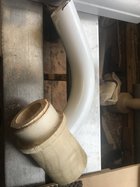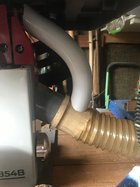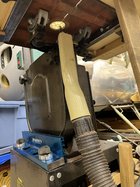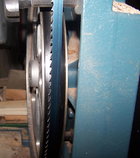My new bandsaw is great but suffers, like others, of poor dust extraction. The 63mm exhaust spigot is situated near the lower wheel whereas most of the dust appears just under the table. My knowledge is limited to experience-the smaller the hole the greater the velocity. Sawdust is bigger than sanding dust. I happened to have a piece of 40mm basin Easter pipe with a 90* bend. As a first attempt proof of concept I found a lump of fence post. Realising that the two suction points needed to be the same diameter I drilled a 40mm hole through the blank and turned it to fit the spigot (one end) and hose the other. Internally the 40mm hole tapered out after the join for the angled pipe. A mix of measurement and trial and error got the length/angle and mouth of the pipe close to the blade under the table. It works very well. Hardly earth shattering but I’m pleased with it. I might refine it but it works well!